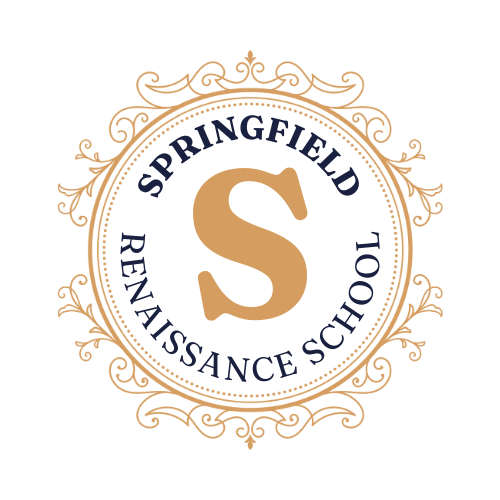
Share Post:
Today’s students have access to more writing assistance than ever before. From grammar checkers and AI generators to paid online paper writer services, it’s easy for a student to turn in an assignment that looks perfect on the surface but was never truly written by them.
According to a 2023 Education Week report, over 37% of high school students admitted to using external writing tools in ways that violated school guidelines. While many tools are not inherently dishonest, how they’re used matters.
At the college level, contract cheating — where students pay someone to do their assignments — continues to grow globally. This trend makes it clear that ensuring authenticity is no longer just a matter of trust. It requires deliberate classroom strategy.
Table of Contents
ToggleUse In-Class Writing Samples as Baselines

One of the most reliable ways to detect inconsistencies in student writing is by collecting in-class samples early in the term. These writing exercises don’t need to be graded heavily or tied to major assignments — their primary purpose is to establish each student’s natural writing style.
Assign a short response to a prompt related to the course content and have students complete it by hand or in a closed-device setting. Focus less on grammar and structure, and more on voice, syntax, and pacing.
Over time, you’ll build a mental (or even digital) profile of each student’s style, tone, and typical vocabulary. When a final paper suddenly shifts from informal, slightly disorganized language to polished academic prose with complex syntax, that red flag becomes easier to recognize and address.
This method also helps identify students who need writing support early on, reducing the need to cheat in the first place.
Assign Process-Based Writing
To ensure students are engaging with their assignments authentically, it’s critical to design assessments that emphasize the process of writing, not just the finished product. Instead of assigning one final due date, break the assignment into clear milestones such as a proposal, an annotated bibliography, a rough draft, peer review feedback, and a final draft.
When students are required to show how their ideas evolve, it becomes significantly harder to outsource the work.
This staged approach allows you to track their thought process, assess the logic of their development, and identify inconsistencies between drafts. Additionally, it builds valuable revision habits and gives students opportunities to improve based on feedback, reducing anxiety and increasing their sense of ownership.
Process-based assessment turns writing into a journey, not just a transaction.
Use Oral Defenses or Reflection Essays
One of the most effective yet underutilized tools to verify authorship is the oral defense — a brief, low-stakes conversation where students talk through their work. After a paper is submitted, ask students to explain their key argument, describe how they approached the research, and identify the hardest part of the assignment.
A genuine author can usually respond with ease, even if imperfectly.
On the other hand, students who used an online paper writer or relied on AI-generated content often struggle to explain how or why specific decisions were made in the writing process. If time is limited, use reflection essays instead.
Ask students to write a 300-word summary about their writing experience, research strategies, or challenges they faced. Their ability to self-assess often correlates with their level of authorship. These reflections also create valuable learning moments and add a layer of accountability.
Structure Assignments to Discourage Outsourcing
Many students turn to contract writers or AI simply because the assignment feels generic or disconnected from their lived experience. If a prompt could be copied and pasted into Google with immediate answers, it’s not well protected against plagiarism.
Instead, create assignment questions that are specific, context-driven, and personalizable. Ask students to relate academic concepts to their community, school, or a personal experience.
For example, instead of asking, “What caused the Great Depression?”, reframe the task as, “How would the Great Depression have affected your town’s economy today?” By requiring students to incorporate local data, personal insight, or school-specific policies, you reduce the usefulness of pre-written content or outsourced work.
Personalized prompts not only ensure originality, but they also increase student engagement because the task feels meaningful, not just academic.
Use Technology Thoughtfully

Technology presents both the challenge and the solution when it comes to academic integrity. While students today have easy access to AI text generators, essay banks, and paid online paper writer platforms, educators can also leverage digital tools to verify originality and detect misconduct.
For written assignments, platforms like Turnitin and Copyleaks help flag unoriginal content and citation gaps. While these tools aren’t foolproof — especially when evaluating AI-generated writing — they serve as a helpful first layer of review.
In computer science and STEM classrooms, instructors should also utilize tools like a code plagiarism checker, which compares programming submissions across databases and identifies structurally similar or copy-pasted code. Just as essay plagiarism tools analyze sentence structures, these code-based tools detect similarities in logic, syntax, and output that wouldn’t be caught through manual grading alone.
For any subject, document history features in tools like Google Docs or Microsoft Word can show how students revised and developed their work over time. If a file suddenly jumps from blank to fully completed with no record of revisions, or if writing style drastically changes between drafts, those signals are worth investigating.
Ultimately, technology should be used not as a punishment mechanism, but as a tool to support fairness and reinforce expectations for original work.
Create a Culture of Integrity
Policy alone cannot guarantee that students will submit their work — school culture and classroom norms play an even bigger role. Students are less likely to cheat when they see that originality is respected, that mistakes are safe to make, and that growth is prioritized over perfection.
Begin the term with a transparent conversation about academic integrity. Explain not only what counts as plagiarism, but why it matters.
Let students know that using AI or an online paper writer to avoid doing the work themselves is a form of intellectual theft, not just a shortcut. Normalize the idea that struggling with writing is part of learning, and that it’s okay to submit a less-than-perfect draft if it’s your own.
Encourage honest effort by offering low-stakes practice, revision opportunities, and positive feedback on improvement. The more you highlight the value of personal effort and ethical conduct, the less likely students are to compromise their integrity for the sake of convenience.
Intervene Early and Often

The best way to protect academic integrity is to build regular check-ins into your instructional routine. Don’t wait until a suspicious final draft lands in your inbox — monitor progress early and often.
Use formative assessments, exit tickets, quick writes, and informal conferences to stay connected to each student’s capabilities and habits. If you notice sudden changes in writing ability, follow up with compassion.
Ask questions like: “How did you approach this assignment?” or “What part of this paper was hardest for you?” The goal is not to accuse, but to open a door for discussion. If a student is overwhelmed, they may admit to needing help or reveal that they were tempted to outsource.
Offering options like deadline extensions, access to a writing center, or small-group drafting sessions can reduce the sense of pressure that often leads to misconduct. By staying actively involved, you help prevent problems before they happen.
Conclusion
Preventing academic dishonesty isn’t about creating a classroom filled with suspicion and surveillance — it’s about designing learning environments that make honest work the most logical path forward.
When teachers use in-class baselines, scaffolded assignments, reflective writing, and meaningful prompts, they not only make cheating harder — they make real learning easier.
With the right support systems in place, students will feel more confident in their abilities and more willing to trust the process. And when academic integrity becomes a shared value rather than just a rule, the classroom becomes a place where students write not to “get it done,” but to grow.
Related Posts:
- How Schools Can Create Their Own Educational Videos…
- Top 10 Mistakes Students Make When Studying Alone
- What to Know Before You Let Students Use Personal…
- 11 Ways to Use Google Workspace for Classroom Efficiency
- Top 10 Free Productivity Tools Every Student Should Use
- How to Use Google Jamboard in Remote Learning











